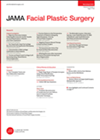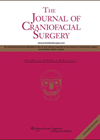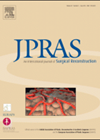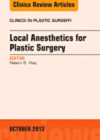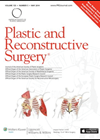
Journal Reviews
Quantity for quality
Although facial paralysis is not uncommon, the number of patients who require free muscle transfer is much smaller. Besides that, the diversity of surgical and non-surgical interventions, the multitude of methods for perioperative assessment, and outcome measurements likewise lead to...
Filleting the lobule in otoplasty
The correction of lobular deformities continues to represent a challenge during otoplasty, due to its three major anatomic components: the axial angular protrusion, the coronal angular protrusion and the inherent shape. These aspects make controlled lobule repositioning less predictable. The...
Objective measurement of the available excursion of temporalis muscle-tendon unit for the paralysed face
The transfer of functional muscle tendon units offers the potential for restoration of some facial tone, symmetry and motion after a single-stage procedure in reanimating the paralysed face. Apart from selecting the right donor muscle of adequate strength and excursion,...
Long-term complication after nasal dorsum augmentation
This is a case report describing a 54-year-old man who had had a rhinoplasty 10 years earlier and was unaware that he had had a porous polyethylene dorsal nasal implant inserted. He presented with a small pustule in the lower...
Propranolol as diagnostic tool for infantile haemangiomas
Infantile haemangiomas are common, benign vascular tumours. Other vascular lesions, which can mimic infantile haemangiomas, include myofibroma, vascular malformations, rhabdomyosarcoma or dermatofibrosarcoma protuberans. The diagnosis of a haemangioma can usually be made based on clinical presentation and medical examination. This...
The superficial circumflex iliac artery perforator flap in intraoral reconstruction
There can be little disagreement that a groin flap, or one of its derivatives, can leave behind a scar which is without problems (except, perhaps to a pole dancer). Thus popularisation of such a flap is much to be desired,...
Raised serum lactate as a marker in the diagnosis of necrotising fasciitis
A 10-year prospective study of cases of suspected necrotising fasciitis was made, involving 53 patients. Of these, 28 had histologically proven necrotising fasciitis, 25 did not. Serum lactate measured at presentation of those who had the condition was 4.1+or-1.62 mmol/l...
Beta blockers in the treatment of infantile haemangiomas
Following the work of Léauté-Labrèze et al. in 2008, describing the successful use of beta blockers in the treatment of infantile haemangiomas, the medical treatment of these troublesome malformations has almost completely replaced surgical treatment, which has been relegated to...
Condylar fractures – current thinking
The author presents a review of 133 papers, most of which are recent and some of which are historic. The topic examined is that of condylar fractures including condylar neck and coronoid process. This topic has always been controversial and...
Scar revision synopsis
The authors present a comprehensive synopsis of late scar revision and other soft tissue deformities. They make the reasonable point that maxillo-facial surgery and its management of soft tissue injuries to the face is closely linked to cosmetic surgery. After...
Evidence based review of management for common head and neck cancers
As part of the PRS evidence based review series, this well written review summarises the up-to-date knowledge regarding the surgical and non-surgical management of the common facial skin cancers. The review is limited to BCC, SCC, MM and Merkel Cell...
VAC therapy and instillation
Vacuum assisted closure (VAC) therapy is now a common sight in plastic surgery departments for the management of difficult wounds, to encourage granulation tissue formation, reduce wound size and facilitate closure or reconstruction. The combined use of VAC dressing with...

